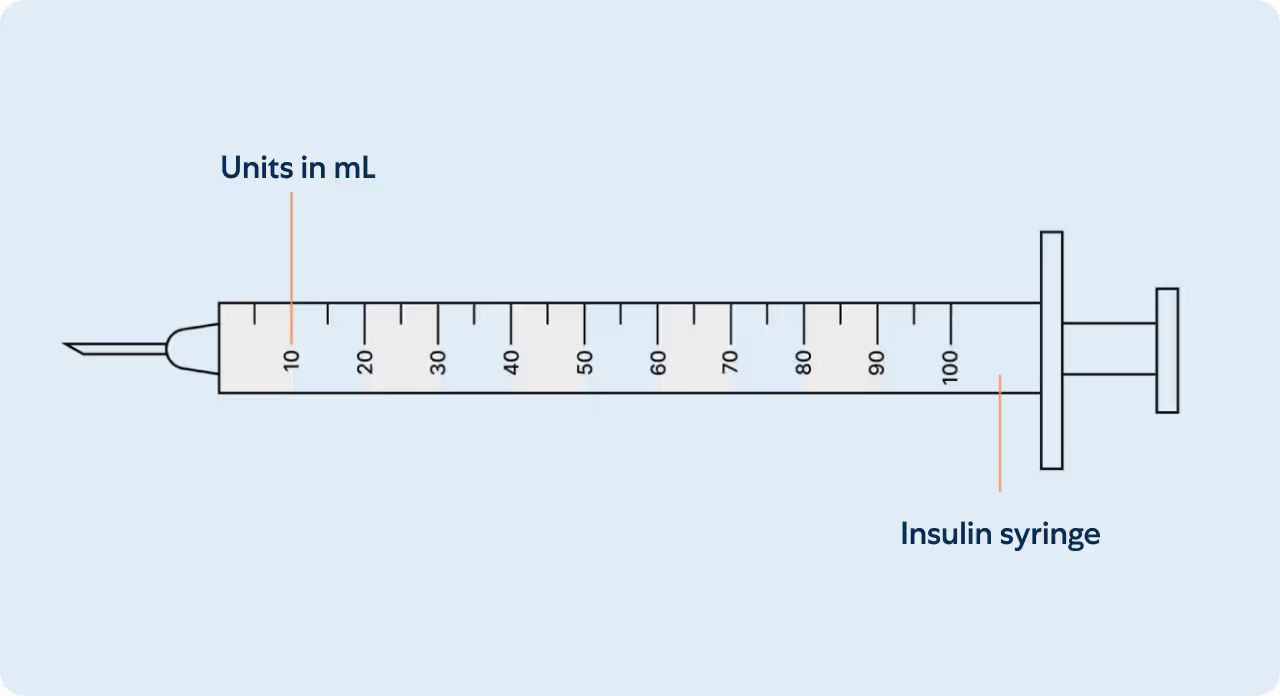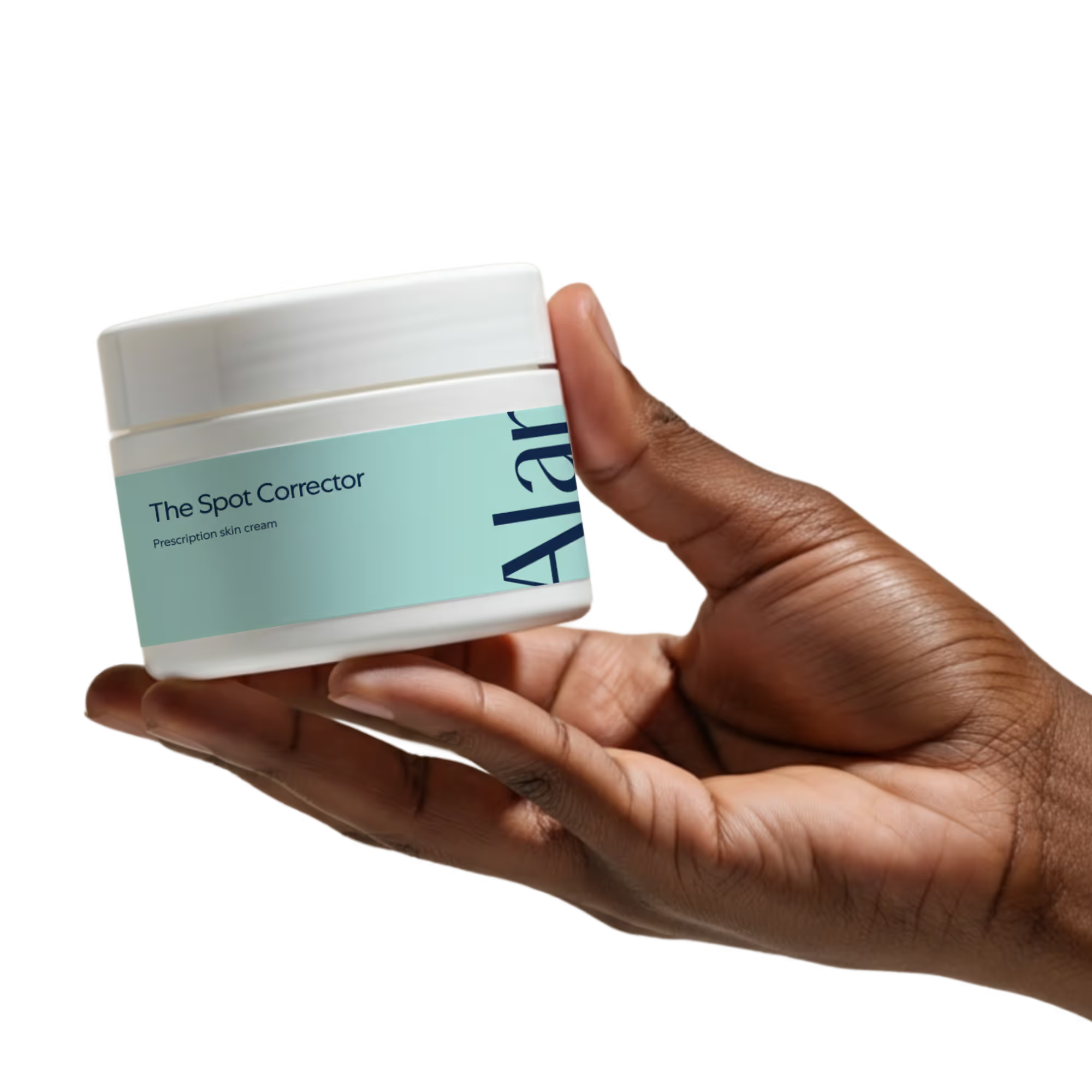Storage
Store at room temperature (68–77°F / 20–25°C), away from direct sunlight and moisture. Keep the container tightly closed when not in use.
Instructions
This information is intended for individuals who have been prescribed The Spot Corrector by their Alan Health provider.
Formulated to visibly reduce dark spots and even out skin tone, The Spot Corrector combines brightening and anti-inflammatory ingredients for targeted skin support.
{{cream-images}}
How to Use The Spot Corrector:
- Cleanse your skin with a gentle, non-exfoliating cleanser.
- Pat dry—do not rub.
- Apply a thin layer of The Spot Corrector to clean, dry skin, focusing on areas with pigmentation or discoloration.
- Use once daily (morning or evening), unless directed otherwise.
- Allow the product to fully absorb before applying moisturizer, sunscreen, or makeup.
Additional recommendations:
- If using in the morning, follow with SPF 30+ to protect your skin and support results.
- If irritation occurs, reduce use to every other day and layer with a gentle, hydrating moisturizer.
- Avoid combining with other active treatments (like retinoids or AHAs) unless directed by your provider.
Understanding your insulin syringe

Measuring your dose
Insulin syringes are used for subcutaneous injections. They are marked in Units on the insulin syringe barrel (see illustration). Insulin syringes facilitate the precise measurement of tiny amounts of liquids which are ideal for medications such as insulin that require small and accurate dosing. Unit marks are also expressed in mL’s and can be interchangeably referenced. A prescriber may write a prescription in Units or in mL’s.
Within the amount of liquid is the prescribed mg dosage of your medication (see mg chart). Milligrams (mg) is not an amount of liquid, but rather the amount of drug that is within. The conversion between units and milligrams varies depending on the concentration of the product being used.
What can I expect?
{{what-to-expect-spot-corrector}}
Safety information
The most common side effects are mild tingling, dryness, or redness at the application site.
In rare cases, side effects include burning, swelling, or signs of allergic reaction. Discontinue use and consult your provider if these occur.
Do not use this product if you are currently pregnant, breastfeeding, or plan to become pregnant or breastfeed without consulting a qualified healthcare provider.
Note: The above statements have not been evaluated by the Food and Drug Administration. This product is not intended to diagnose, treat, cure, or prevent any disease.
Frequently Asked Questions
What is The Spot Corrector
The Spot Corrector is a prescription-strength cream that targets dark spots, melasma, and post-acne marks using a dermatologist-formulated blend of azelaic acid 15%, tranexamic acid 4%, and niacinamide 1%. It's designed to fade discoloration and even skin tone—gently and effectively.
How long until I see results on dark spots?
Most people begin to see subtle fading of dark spots within 4–8 weeks, with full results typically visible by 12–16 weeks of consistent use.
Can I use this with other skincare products?
Yes. Apply The Spot Corrector to clean skin before layering moisturizers or sunscreen. Avoid using it at the same time as other active treatments (like retinoids or exfoliating acids) unless directed by your provider.
Is it safe for sensitive skin?
Yes—this formula is designed to be gentle, with barrier-supportive niacinamide. You may experience slight tingling at first, but it’s typically well tolerated.
Will this work on older discoloration or deep melasma?
Yes—The Spot Corrector targets both new and existing pigmentation, including melasma. However, deeper or longstanding discoloration may take longer to fade.
Can I use The Spot Corrector during the day?
The Spot Corrector can be used day or night. If using during the day, daily sunscreen (SPF 30+) is essential to protect treated skin and prevent new dark spots from forming. Using sunscreen enhances results and helps maintain even tone.
Can I use The Spot Corrector with makeup?
Yes, this cream layers well under makeup and moisturizers. Allow it to fully absorb before applying other products.
What if my skin gets worse before it gets better?
Some users experience temporary purging or mild sensitivity in the first few weeks. This usually resolves as your skin adjusts. If irritation persists, reduce frequency or consult your provider.
What if I experience dryness or mild irritation?
A slight tingling or dryness during the first 1–2 weeks is normal as your skin adjusts. You can layer a gentle moisturizer, slow to every-other-night use, or reduce frequency until tolerable.
Additional support
For details about your medication and dosing, please log in to your patient portal. Your physician is here to help with any medical questions. If you are experiencing a medical emergency, call 911 right away.













